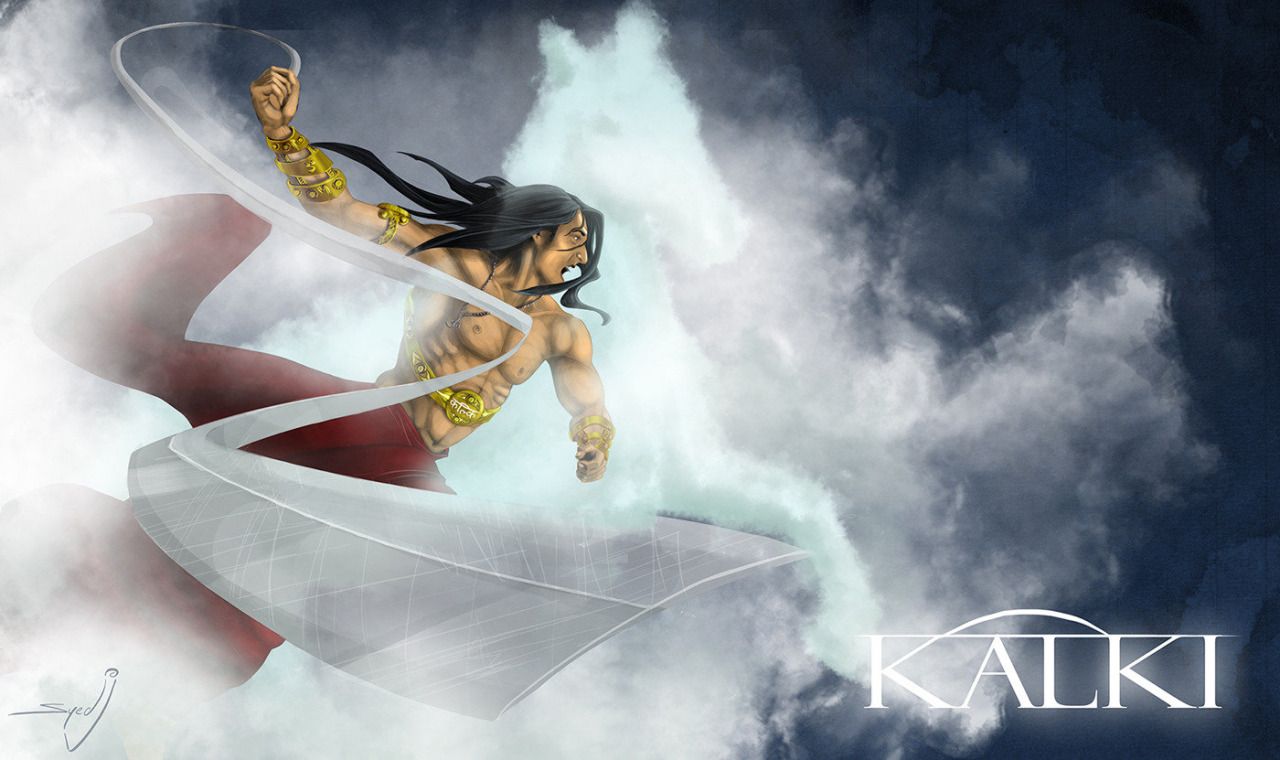Sanatan Dharma, or the eternal way of life, is deeply rooted in Vedic scriptures, offering profound insights into the nature of the cosmos and its future. The Hindu understanding of time and the universe is unique, with its foundation resting on the cyclical nature of creation, preservation, and destruction. Unlike linear interpretations of time, Sanatan Dharma describes time as a repeating cycle that spans millions of years, with distinct phases of birth, decay, and rebirth.
we will explore the future of the universe according to Hindu scriptures like the Vedas, Puranas, Upanishads, and the Bhagavad Gita, offering a deep dive into the cosmic processes and predictions outlined by these ancient texts.
The Cyclical Nature of Time: The Yugas
Hindu cosmology is divided into four Yugas (ages), which represent the decline of Dharma (righteousness) over time. These Yugas form a complete cycle known as the Maha Yuga, and after one Maha Yuga concludes, the cycle begins again. This cyclical process governs the fate of the universe.
The four Yugas are:
1. Satya Yuga (Age of Truth): Dharma is at its peak, and society is righteous. This period lasts for 1.728 million years.
2. Treta Yuga: Dharma declines by a quarter. This age lasts for 1.296 million years.
3. Dvapara Yuga: Dharma is reduced by half. It lasts for 864,000 years.
4. Kali Yuga: The current age of spiritual decline, where Dharma is reduced to a quarter. This age lasts for 432,000 years.
We are currently living in Kali Yuga, which began over 5,000 years ago, after the great war described in the Mahabharata.
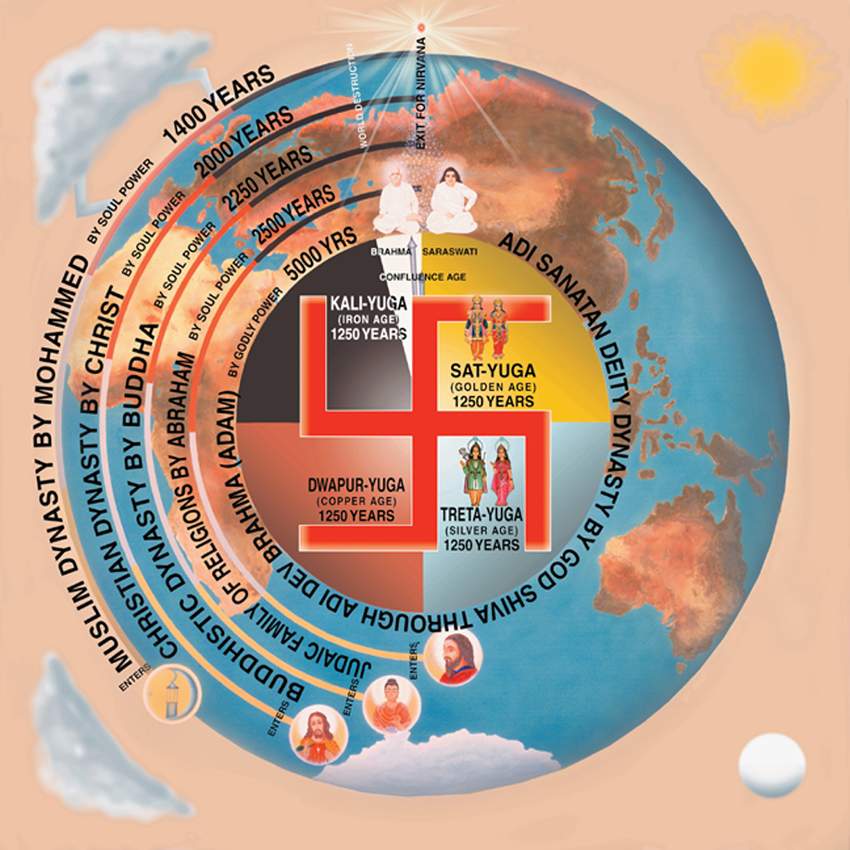
References:
– Srimad Bhagavatam (12.2.29-31) describes the characteristics and challenges of Kali Yuga, predicting widespread moral degradation and chaos in society.
– The Vishnu Purana (Book IV, Chapter 24) also provides insight into the progression of the Yugas and the eventual arrival of Kalki at the end of Kali Yuga.
The End of Kali Yuga: The Arrival of Kalki
According to Hindu scriptures, Kali Yuga will reach its climax when Dharma is at its weakest, and evil dominates the world. At this critical juncture, Lord Vishnu, in his final avatar, Kalki, will descend to restore order. Riding a white horse and wielding a sword, Kalki will destroy the forces of darkness and prepare the world for a new beginning.
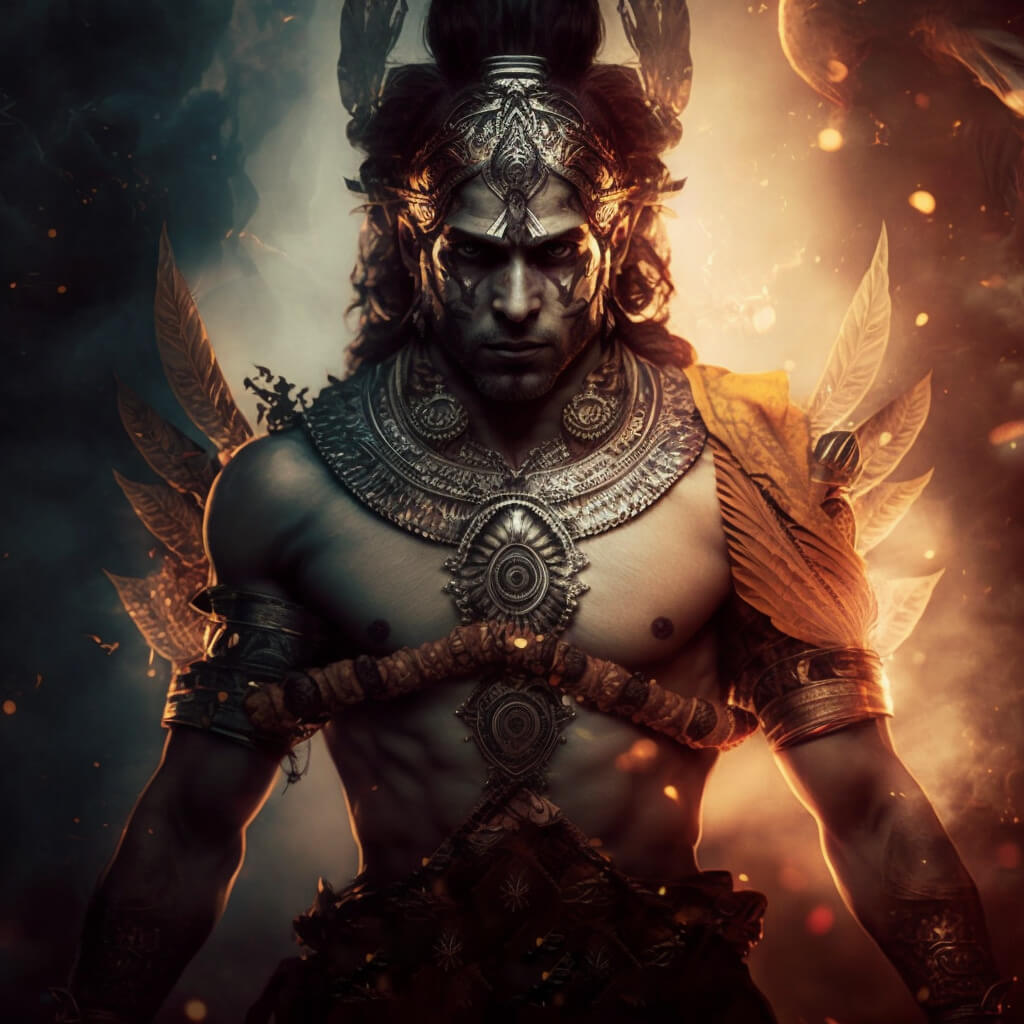
What Will Happen at the End of Kali Yuga?
The Vishnu Purana (Book IV, Chapter 24) and the Bhagavata Purana (12.2.19-20) describe the end of Kali Yuga in detail. Kalki will annihilate the wicked, purify the world, and usher in the next Satya Yuga. The cycle of Yugas will begin anew, restoring peace and righteousness on Earth.
Key Verse:
In Srimad Bhagavatam (12.2.20), it is written:
“At the end of Kali Yuga, the Supreme Lord will incarnate as Kalki, riding a swift horse, and will eradicate all evil from the earth, reestablishing Dharma.”
Creation, Preservation, and Destruction: The Trimurti
In Sanatan Dharma, the universe undergoes regular cycles of creation, preservation, and destruction, governed by the Trimurti:
– Brahma is the creator of the universe, responsible for bringing life into existence.
– Vishnu is the preserver, maintaining the balance of good and evil in the cosmos.
– Shiva (Mahesh) is the destroyer, responsible for the cosmic dissolution, which paves the way for new creation.
These three deities together form the cosmic order, ensuring the universe flows through its cycles of birth and rebirth.
Pralaya: The Destruction of the Universe
The end of the cosmic cycle is referred to as Pralaya, the dissolution of the universe. Hindu scriptures describe different types of Pralaya:
1. Naimittika Pralaya: This occurs at the end of Brahma’s day (lasting 4.32 billion years), where the physical universe is temporarily destroyed.
2. Prakritika Pralaya: The complete destruction of the universe into its primordial elements.
3. Atyantika Pralaya: The dissolution of an individual soul when it attains liberation or Moksha.
During Pralaya, the universe returns to a state of cosmic dormancy, only to be recreated again by Brahma when the next cycle begins.
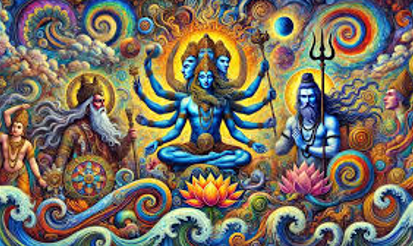
References:
– Vishnu Purana (1.3.1-5) describes how Brahma creates and dissolves the universe in cycles, explaining the concept of Pralaya in detail.
– Bhagavad Gita (9.7-8): “At the end of the cosmic cycle, all beings return to my unmanifest form, and when a new cycle begins, I create them again.”
The Eternal Soul and Liberation (Moksha)
While the physical universe undergoes cycles of creation and destruction, the Atman (soul) remains eternal. According to Sanatan Dharma, the soul is not bound by these cycles but can transcend them through spiritual practice and the attainment of Moksha.
What Happens to the Soul?
The ultimate goal of life in Sanatan Dharma is to break free from the cycle of Samsara—the cycle of birth, death, and rebirth. Through devotion, knowledge, and righteous living, one can achieve Moksha, merging with the divine Brahman (Supreme Reality). When a soul achieves Moksha, it is no longer bound by the material universe’s cycles and remains in a state of eternal bliss.
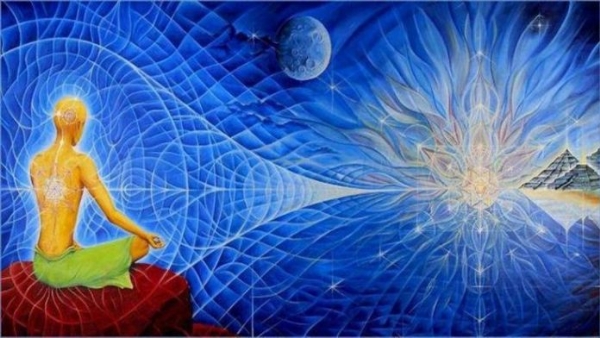
Key Verse:
Bhagavad Gita (2.20) explains the eternal nature of the soul:
“The soul is never born and never dies. It does not come into being, nor does it cease to exist. The soul is eternal, unborn, and imperishable.”
Cosmic Time and Its Measurement
Hindu scriptures provide intricate details on the measurement of cosmic time. Brahma’s life is the standard by which cosmic cycles are measured. A single day of Brahma is called a Kalpa, which consists of 1,000 Maha Yugas (4.32 billion years). At the end of Brahma’s day, Naimittika Pralaya occurs, and the universe dissolves temporarily, only to be recreated at the beginning of his next day.
Brahma’s Life Cycle:
– One Day of Brahma (Kalpa): 4.32 billion years
– One Year of Brahma: 360 Kalpas
– Brahma’s Lifespan: 100 Brahma years (311.04 trillion years)
At the end of Brahma’s lifespan, the universe undergoes Prakritika Pralaya, where everything dissolves back into the primal state, awaiting the next cycle of creation.

References:
– Vishnu Purana (1.3.5) describes the concept of time in terms of Brahma’s life cycle and how the universe undergoes regular cycles of creation and destruction.
A Cyclical Future Governed by Dharma
According to Sanatan Dharma, the future of the universe is cyclical, with alternating periods of creation, preservation, and destruction. The universe will continue to undergo these phases, governed by the eternal principles of Dharma. As Kali Yuga reaches its conclusion, the arrival of Kalki will mark the dawn of a new Satya Yuga, restoring righteousness to the world. Through the teachings of the Vedas, Puranas, and Bhagavad Gita, Sanatan Dharma provides a cosmic blueprint that is both timeless and ever-relevant, guiding humanity through the cycles of time.
For individuals, the ultimate goal is to transcend these cosmic cycles and attain Moksha, realizing the eternal nature of the soul and merging with the divine. The future, as outlined by Sanatan Dharma, is one of eternal renewal, transformation, and spiritual liberation.

